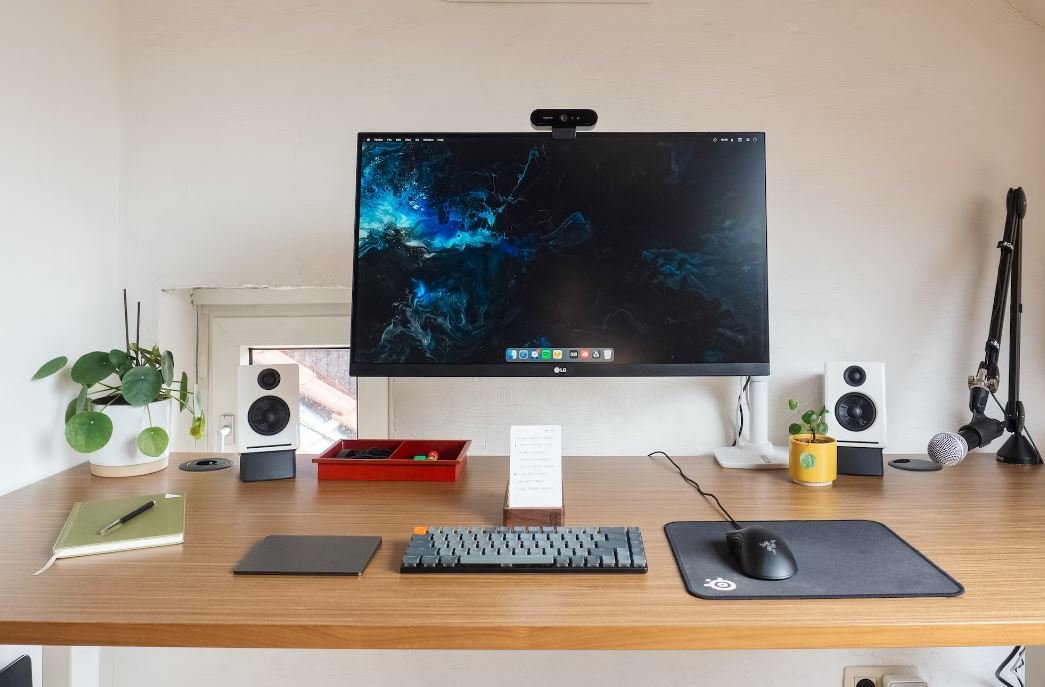Applications and Programs on a Computer
In today’s technology-driven age, computers have become an essential part of our daily lives. From productivity tools to entertainment software, computers offer a wide range of applications and programs that cater to various needs and interests. This article explores the different types of applications and programs available on a computer, their functions, and their significance in our digital world.
Key Takeaways:
- Applications and programs on a computer serve various purposes, from productivity and communication to entertainment and creativity.
- Operating systems are fundamental software that manages computer hardware and enables software applications to run.
- Productivity applications, such as word processors and spreadsheet software, help users accomplish tasks efficiently.
- Communication programs, like email clients and instant messaging apps, facilitate seamless interaction with others.
One of the most essential components of a computer is its operating system (OS). The OS is responsible for managing the computer’s hardware resources, coordinating software applications, and providing a user-friendly interface. Examples of popular operating systems include Microsoft Windows, macOS, and Linux. These systems support a wide range of applications and provide the foundation for other software programs to run on a computer.
In the digital world, productivity applications are a necessity for individuals and businesses alike. These applications assist in creating, editing, and managing different types of files. Word processors, such as Microsoft Word and Google Docs, enable users to write and format documents. Spreadsheet software, such as Microsoft Excel and Google Sheets, allows users to perform complex calculations and organize data efficiently. Presentation software, such as Microsoft PowerPoint and Apple Keynote, assists in creating visually appealing slideshows and delivering impactful presentations.
Communication programs are crucial for staying connected in today’s interconnected world. Email clients, such as Microsoft Outlook and Gmail, provide a means to send, receive, and manage emails. Instant messaging applications, like WhatsApp and Slack, enable real-time conversations and group collaborations. Video conferencing software, such as Zoom and Microsoft Teams, allows face-to-face communication over long distances.
Types of Applications and Programs:
Let’s explore some different types of software applications and programs commonly found on computers:
1. Productivity Applications:
Productivity applications are designed to help users manage tasks efficiently and accomplish various work-related activities. Some popular examples include:
- Microsoft Office Suite: A comprehensive suite of applications, including Word, Excel, PowerPoint, and more.
- Google Workspace: A cloud-based productivity suite with applications like Google Docs, Sheets, Slides, and more.
- Adobe Creative Cloud: A collection of creative tools for design, photography, video editing, and more.
2. Entertainment Software:
Entertainment software provides a wide range of digital entertainment options, including:
- Media Players: Software applications like VLC Media Player and Windows Media Player enable users to play various types of media files, such as audio and video.
- Gaming Platforms: Platforms like Steam and Epic Games provide access to a vast library of computer games.
- Streaming Services: Applications like Netflix and Amazon Prime Video allow users to stream movies, TV shows, and other content online.
3. Creative Applications:
Creative applications enable users to express their artistic abilities and create digital content. Some popular examples include:
- Adobe Photoshop: A versatile image editing software widely used by photographers, graphic designers, and digital artists.
- Autodesk AutoCAD: A renowned software for 2D and 3D design, drafting, and modeling.
- Ableton Live: A professional music production software favored by musicians and producers for creating and performing music.
Useful Data Points:
| Application Type | Common Examples |
|---|---|
| Operating Systems | Microsoft Windows, macOS, Linux |
| Productivity Applications | Microsoft Office Suite, Google Workspace, Adobe Creative Cloud |
| Communication Programs | Microsoft Outlook, Gmail, WhatsApp, Slack, Zoom, Microsoft Teams |
With continuous advancements in technology, new applications and programs are being developed regularly to cater to the evolving needs of users. It is crucial to stay informed about the latest software trends and updates to make the most of the digital tools available.
From managing tasks efficiently to exploring new avenues of creativity, applications and programs on a computer empower users to harness the full potential of technology. Whether it’s using productivity software to streamline workflow or indulging in entertainment applications for relaxation, these digital tools have become an integral part of our modern lives. Embrace the multitude of options available and unlock the endless possibilities within our digital world.

Common Misconceptions
Applications and Programs on a Computer
There are many common misconceptions that people have about applications and programs on a computer. One of the most common misconceptions is that all applications and programs are the same. While it is true that many applications and programs have similar functions, it is important to note that they can vary greatly in terms of features and capabilities.
- Applications and programs can vary in terms of their user interface, with some being more intuitive and user-friendly than others.
- Some applications and programs are designed for specific purposes, such as photo editing, while others are more general and versatile.
- The performance and efficiency of applications and programs can also differ, with some being faster and more resource-efficient than others.
Another common misconception is that applications and programs are only available for Windows computers. While it is true that Windows has been a dominant operating system in the past, there are now many applications and programs available for other operating systems such as macOS and Linux.
- There are a wide variety of applications and programs available for macOS, including popular software like Final Cut Pro and Logic Pro.
- Linux users have access to a vast library of open-source applications and programs, offering a range of options for different needs.
- Many popular applications and programs are now available for multiple operating systems, enabling users to switch between different platforms without losing access to their preferred software.
Some people also believe that applications and programs are always expensive. While there are certainly premium applications and programs that require a purchase, there are also many free or low-cost alternatives available.
- Open-source applications and programs are often available for free, allowing users to take advantage of powerful software without any cost.
- Many software developers offer lite or trial versions of their applications and programs, providing users with a limited but functional experience without requiring a full purchase.
- Some applications and programs have subscription models, allowing users to pay a smaller monthly or yearly fee instead of a large upfront cost.
One misconception that can cause frustration is the belief that all applications and programs are safe to download and install. Unfortunately, there are malicious applications and programs out there that can harm your computer or compromise your privacy.
- It is important to only download applications and programs from trusted sources and avoid downloading from unknown websites.
- Read reviews and check for any reported issues or security concerns before downloading and installing a new application or program.
- Keep your applications and programs updated to ensure that you have the latest security patches and bug fixes.
Lastly, some people think that applications and programs are complex and difficult to use. While there certainly are advanced and specialized software that require specific knowledge and skills, many applications and programs are designed to be user-friendly and accessible to a wide range of users.
- Many applications and programs provide a guided or tutorial mode to help new users get started and learn the basics.
- Online communities and forums can be great resources for getting help and guidance on using applications and programs.
- Feature-rich applications and programs may have advanced settings and functions, but users can start with the basic features and gradually explore the more advanced options as they become more comfortable.

Applications and Programs on a Computer
Computers have become an integral part of our lives, enabling us to perform a wide range of tasks efficiently. One of the key components that make computers so versatile is their ability to run various applications and programs. These applications and programs cater to different needs, from communication to design, from entertainment to productivity. In this article, we will explore ten different applications and programs that enhance our computer experience with their unique features and functionality.
Email Clients
Email clients are essential for managing and organizing our email communication. They provide features like email organization, spam filtering, and advanced search options. Popular email clients include Outlook, Thunderbird, and Mailbird.
Web Browsers
Web browsers are the gateway to the internet, allowing us to access websites and web-based applications. They provide features like tabbed browsing, bookmark management, and privacy settings. Well-known web browsers include Chrome, Firefox, and Safari.
Photo Editing Software
Photo editing software empowers users to enhance and modify digital images. These programs offer tools for color correction, cropping, resizing, and advanced editing. Adobe Photoshop, GIMP, and Pixlr are infamous for their photo editing capabilities.
Video Players
Video players enable us to watch videos and movies on our computers. They support various file formats, provide playback controls, and often have additional features like subtitle support and playlist management. VLC Media Player, Windows Media Player, and QuickTime are well-known video players.
Accounting Software
Accounting software simplifies financial management for individuals and businesses. These tools assist with invoicing, expense tracking, budgeting, and tax calculations. Popular accounting software includes QuickBooks, Xero, and Zoho Books.
Word Processors
Word processors facilitate the creation, editing, and formatting of documents. They offer features like spell checking, auto-correction, and document templates. Microsoft Word, Google Docs, and LibreOffice Writer are widely used word processors.
Music Production Software
Music production software is used for creating and editing music tracks. These programs offer recording capabilities, virtual instruments, effects, and mixing tools. Popular options in this category are FL Studio, Ableton Live, and Pro Tools.
Antivirus Programs
Antivirus programs protect computers from malware and other security threats. They offer real-time scanning, malware removal, and firewall protection. Widely used antivirus programs include Norton, McAfee, and Avast.
Video Conferencing Tools
Video conferencing tools enable face-to-face communication over the internet. They provide features like video and audio calling, screen sharing, and chat options. Zoom, Microsoft Teams, and Skype are popular video conferencing tools.
Project Management Software
Project management software helps users plan, schedule, and collaborate on projects. They offer features like task tracking, resource management, and progress reporting. Prominent project management tools include Trello, Asana, and Basecamp.
In conclusion, applications and programs play a crucial role in enhancing the functionality and versatility of computers. From email clients and web browsers to photo editing software and project management tools, each application serves a specific purpose and provides unique features that enhance our digital experience. Understanding and utilizing these applications can significantly improve productivity, creativity, and overall computer usage.
Frequently Asked Questions
Question 1
What is an application?
An application, also known as a software program, is a set of instructions that allows a computer to perform specific tasks. It is designed to help users accomplish various functions, such as word processing, web browsing, or playing games.
Question 2
What is the difference between an application and a program?
The terms “application” and “program” are often used interchangeably. However, generally, an application is a higher-level software that provides a specific function or set of functions, while a program refers to a more general term for any piece of executable software.
Question 3
How do I install an application on my computer?
To install an application on your computer, you typically need to download the installation file from the software provider’s website or an app store. Once downloaded, you can run the installer and follow the on-screen instructions to complete the installation process.
Question 4
Can I install multiple applications on my computer?
Yes, you can install multiple applications on your computer. Each application is stored as a separate file, and you can run them independently from one another.
Question 5
Where can I find applications for my computer?
You can find applications for your computer from various sources, such as official websites of software providers, app stores like Google Play or Apple App Store, or software repositories specific to your operating system.
Question 6
How do I uninstall an application?
To uninstall an application from your computer, you can typically go to the “Add or Remove Programs” or “Apps & Features” section in your computer’s settings. From there, you can select the application you want to uninstall and follow the prompts to remove it from your system.
Question 7
Can I customize or personalize applications on my computer?
It depends on the application and its features. Some applications allow users to customize certain settings, such as preferences, color schemes, or layouts. However, not all applications offer extensive customization options.
Question 8
What are system requirements for installing applications?
System requirements vary depending on the application. They typically include information about the minimum amount of memory (RAM), processor speed, operating system version, and available hard drive space needed to run the application. You can usually find system requirements on the application’s website or in the documentation provided.
Question 9
Can I transfer applications from one computer to another?
In most cases, you cannot directly transfer applications from one computer to another. When you change computers, you usually need to reinstall the applications on the new system using their respective installation files or the original installation media.
Question 10
What should I do if an application on my computer is not working properly?
If an application is not working as expected, you can try a few troubleshooting steps. First, make sure the application is up to date by checking for any available updates. If that doesn’t solve the issue, you can try restarting your computer or reinstalling the application. Additionally, contacting the application’s support team or searching for online forums related to the specific issue can often provide helpful solutions.





